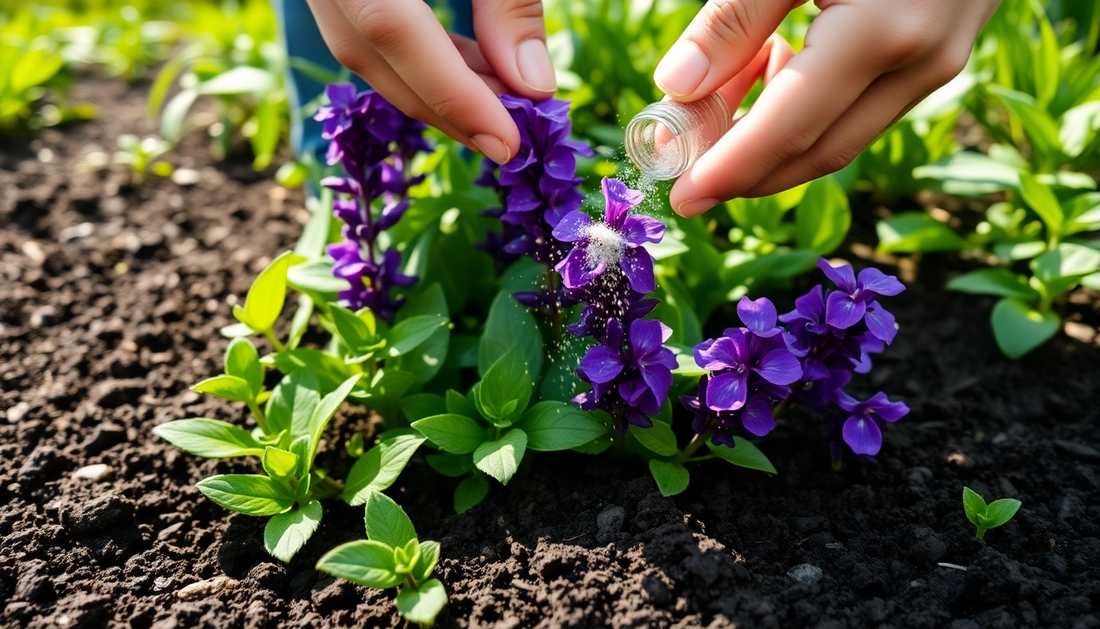
How to Fertilize Salvia Plants Effectively
Understanding Salvia: A Blossoming Delight
When it comes to adding an exuberant splash of color to your garden, few plants can match the vibrancy and appeal of the salvia plant. Known for their striking flower spikes and a thriving variety of hues, salvias are a gardener's dream. But just like any other plant, they require attention, particularly in terms of fertilization, to reach their full potential. Let's dive into the world of salvias and learn the best practices for helping these beauties flourish.
Why Fertilize Salvia: Nutrient Needs of a Thriving Plant
Salvias, like any vigorous flowering plants, draw a significant amount of nutrients from the soil to sustain their lush growth and vibrant blooms. Fertilization is pivotal in replacing the nutrients lost in this process. Your salvia plants will not only thank you for the extra sustenance by blessing your garden with more vigorous blooms but will also grow stronger and healthier, building resilience against pests and diseases. A well-fed salvia is a happy salvia, which translates to a radiant garden filled with color and life.
Choosing the Right Fertilizer for Your Salvia
Not all fertilizers are created equal, and the differences lie in their nutrient composition. Salvias prefer a balanced approach, where an even mix of nitrogen, phosphorus, and potassium (often labeled as N-P-K) works wonders. A standard balanced fertilizer, like a 10-10-10 or 14-14-14 formula, is generally a safe bet for healthy growth. However, if you're looking to enhance your flowers’ bloom, opting for a slightly higher phosphorus ratio can give that added boost. Remember, it’s also worth considering an organic fertilizer if you’re inclined towards sustainable gardening practices.
Application Tips: How and When to Fertilize Salvia
Knowing the type of fertilizer to use is only part of the game. Timing and method of application are equally crucial. For best results, it's recommended to start fertilizing your salvias in the springtime, when the plants are waking up and beginning their new growth cycle. Applying fertilizer every six to eight weeks during the growing season will maintain nutrient levels. Be cautious, however; over-fertilizing can be detrimental, causing lush foliage at the expense of flowering. To apply, simply broadcast the granules evenly around the base of the plant, or if using a liquid form, follow the instructions for dilution and apply directly at the base.
Common Mistakes and Myths in Salvia Fertilization
Fertilizing salvia seems straightforward, but common errors can lead to setbacks. A prevalent mistake is the assumption that more fertilizer equals better growth. In reality, over-fertilization can result in excessive leafy growth with fewer blooms, often making the plant more susceptible to pests. Another pitfall is ignoring soil pH levels, which can affect nutrient uptake. Salvias prefer a slightly alkaline to neutral soil pH; thus, keeping tabs on soil conditions will ensure that your efforts to fertilize are not in vain. Lastly, resist the temptation to fertilize during dormancy – this is a time when plants need to rest, not fuel up.
Nurturing a Garden that Flourishes
Mastering how to fertilize salvia plants is a rewarding endeavor. By understanding the unique needs of your salvias, choosing the right fertilizer, applying it wisely, and avoiding common pitfalls, you will create a garden ambiance that is both healthy and exhilarating. So next time you stroll through your garden, take a moment to admire the energetic blooms of your salvias, knowing they're not just a result of nature's brilliance, but also your devoted nurturing. Happy gardening!
